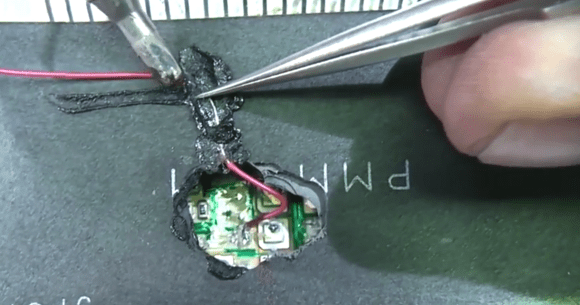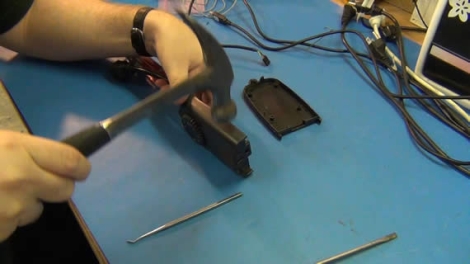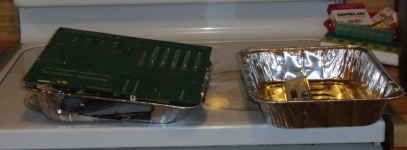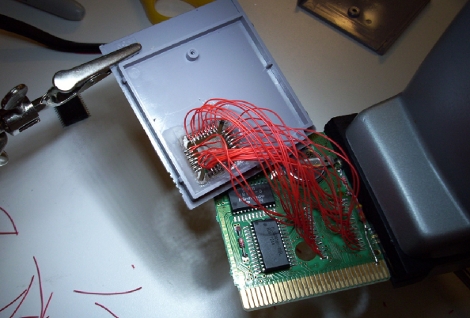
Designing and building something from scratch is one thing. But repairing fried electronics is a much different type of dark art. This video from [Mike’s Electric Stuff] is from more than a year ago, but we didn’t think you’d mind since what he accomplishes in it is so impressive. He’s got a burnt out pick and place hybrid power module which isn’t going to fix itself.
The power module construction includes a part that has chip-on-board-style MOSFETs and the circuitry that goes with them enclosed in a black plastic housing. It’s kind of like a submodule was encapsulated using the same plastic as integrated circuits. After cracking it open it appears the bonding wire has burnt away. [Mike] connects a jumper wire to one of the board traces in order to use an external MOSFET. This is much easier said than done since the module substrate is ceramic designed to dissipate heat. We’re amused by his technique of melting the jumper into the plastic housing to protect it from the heat sink that goes over the package. In the end he gets his CNC running again. This may not be the best long-term fix but he just needed to continue running until a proper replacement part arrives.
Oh, one more thing: the Metcal vacuum desolderer he uses in the video… do want!
Continue reading “Tricky Repair Of Power Driver For CNC Machine”


















